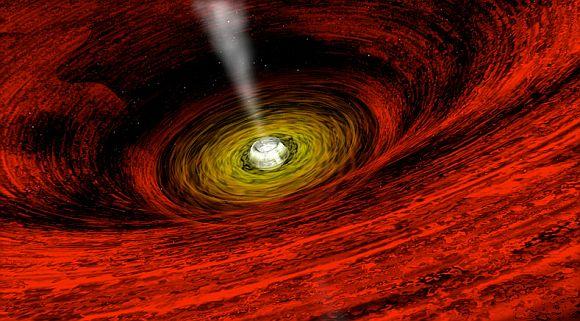Black holes heading for 'massive collision,' says astronomer
September 22, 2015 19:26

A really, really big bang not due for a hundred millennia may help astronomers test one of the central theories of physics, according to one of the authors of a new paper.
Two black holes in Virgo are heading for a "massive collision," Columbia University astronomer Zoltan Haiman said in a Columbia news release posted on Science Daily. Haiman is co-author of a paper in the journal Nature examining flashes coming from a quasar.
The flashes, according to Haiman and his co-authors, Columbia's Daniel D'Orazio and David Schiminovich, are originating from a pair of black holes orbiting each other in quasar PG 1302-102, about 3.5 billion light-years away. The two black holes are about a light-week or two apart -- less than 200 billion miles. That's far closer than Earth is to its next nearest star, Proxima Centauri, which is more than 4 light-years (24 trillion miles) from our planet.
Ironically, keeping in mind that a light-year is the distance light travels in a year, what astronomers are seeing in PG 1302-102 actually occurred when life had just emerged on Earth.
Read more HERE.





 © 2024 Rediff.com -
© 2024 Rediff.com -